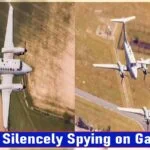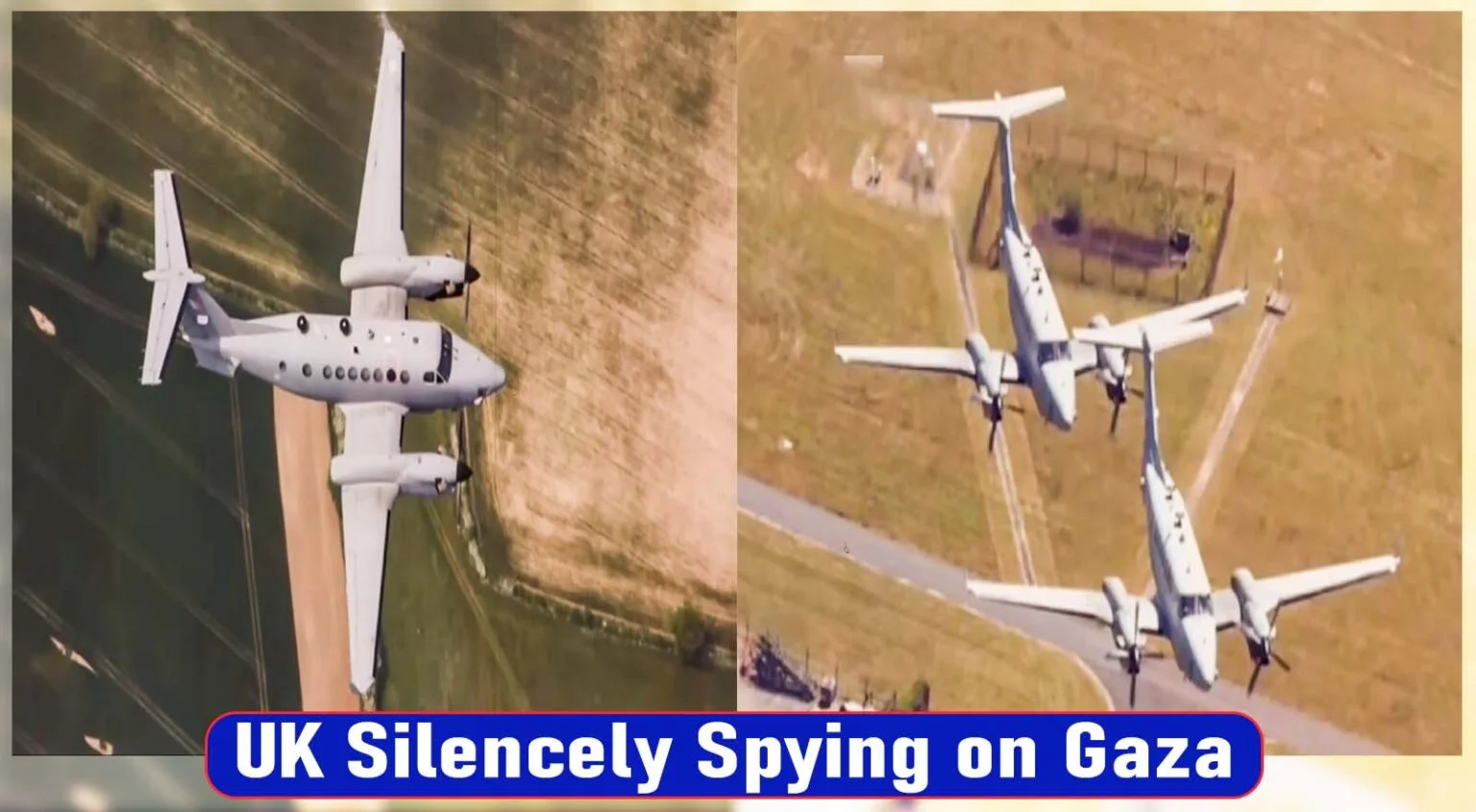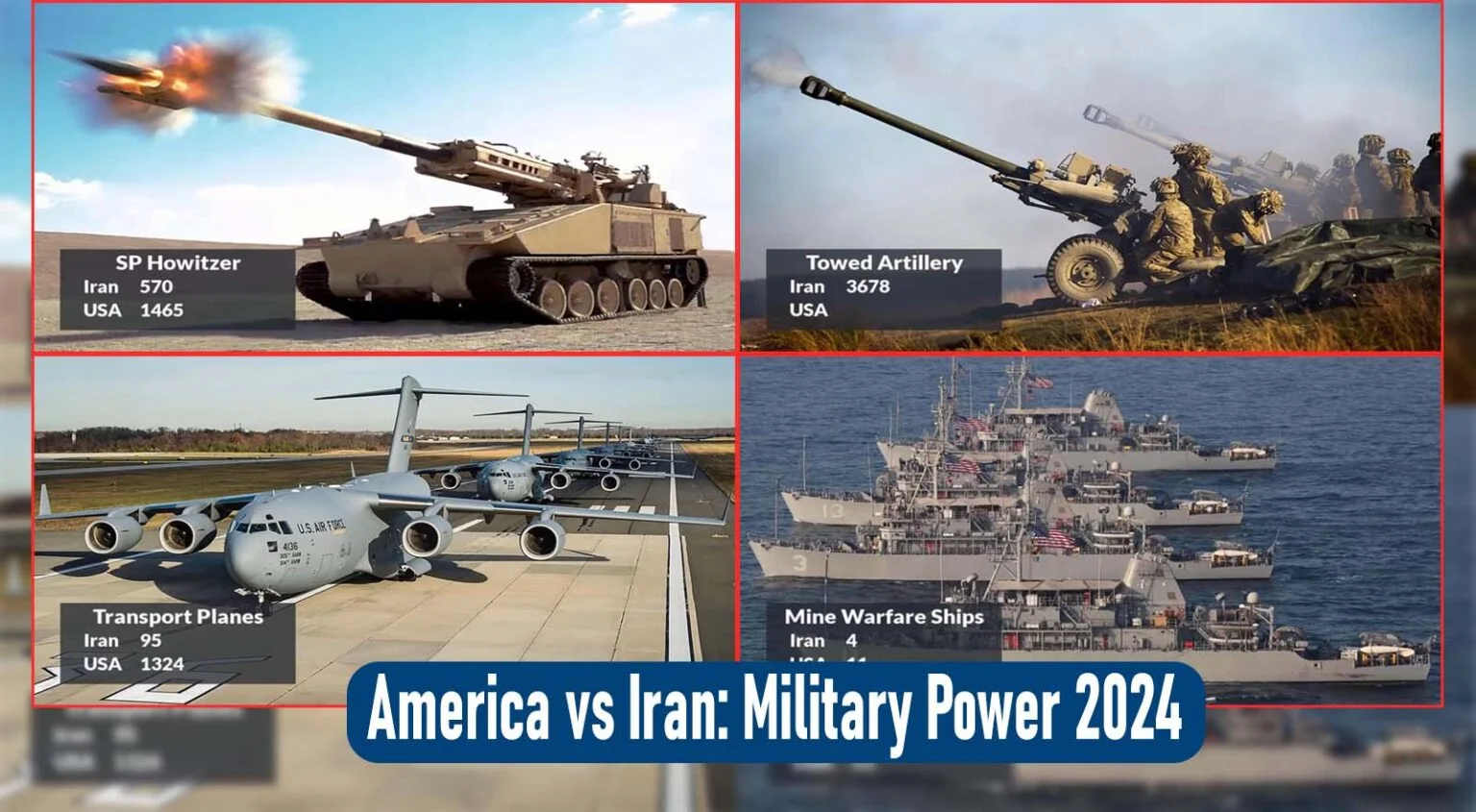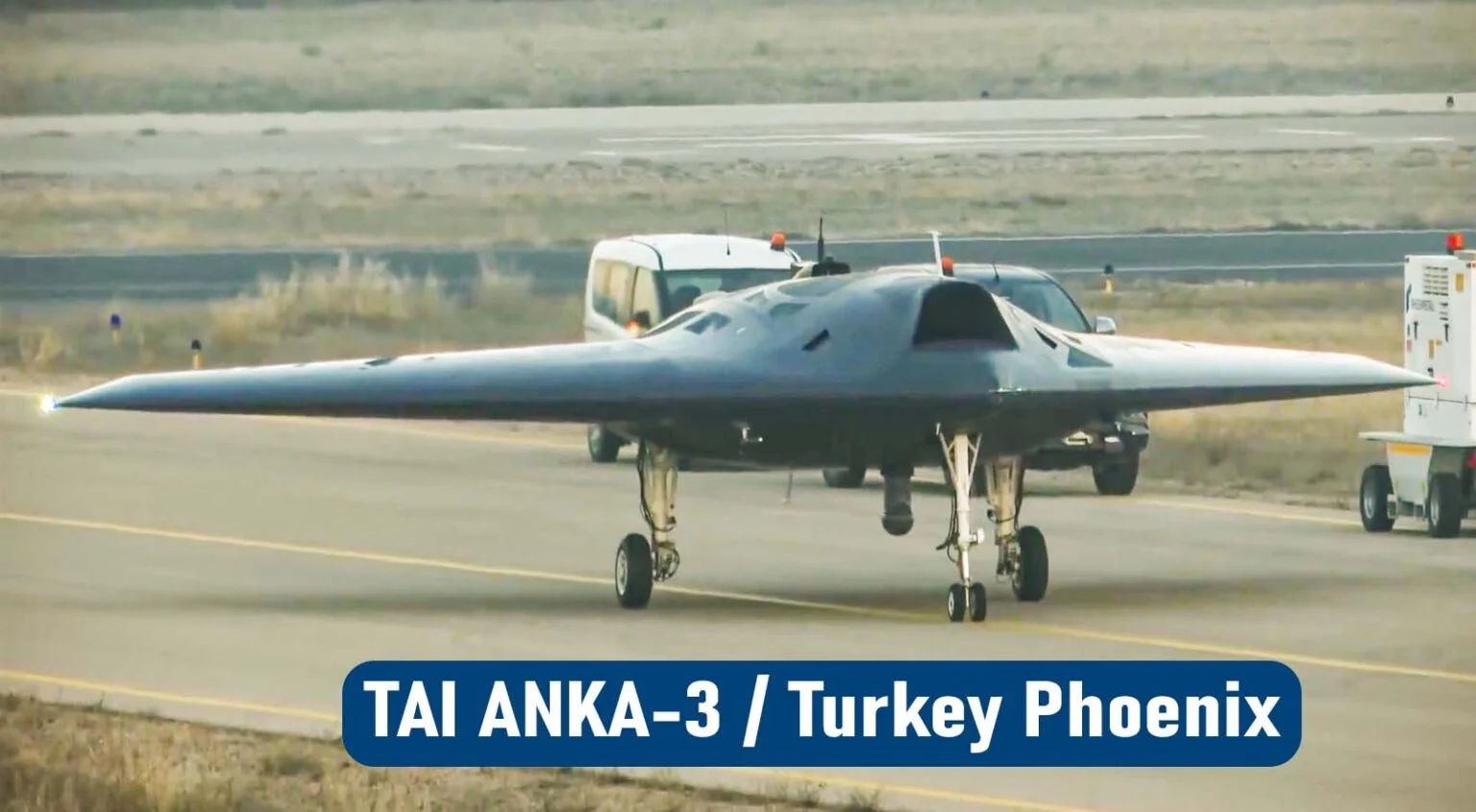TAI KAAN (TF-X KAAN) is a multirole fighter with air-to-surface and air-to-air capabilities designed and manufactured by Turkish Aerospace Industries. It is designed in such a way that it can evade enemy radar and attack enemy positions and return safely to its own area. Basically, after falling out with the US over the development of the F-22 fighter, the Turks started to develop their own jet aircraft. It has a stealth feature that keeps it invisible to enemy radars. The fighter jet about seventy-nine feet long and twenty feet in height is capable of flying at an altitude of 55,000 feet at a speed of 2,222 to 2,700 kilometers per hour.
It is capable of achieving supersonic speeds without turning on the engine’s afterburner. Its canopy is bird streak resistant, the nose and cockpit are made of high-quality aluminum and the center fusible section is made of titanium. The fighter’s full body and engine inlets are wrapped in high-quality composite carbon thermoplastic with a geometric design. All these technologies modernize the aircraft as well as make it a fifth-generation stealth fighter with all of the ultimate capabilities. As a result, enemies can bring them to the brink of total death in a nightmare before they know it.
***** We have compared Turkish drones to. Some of these are HESA Shahed 136, Baykar Bayraktar Kızılelma, TAI ANKA UCAV, ANKA and ANKA-3.
***** You can check out the fighters F-16 Fighting Falcon, F-22 Raptor, Sukhoi Su-57, F-35 Lightning II, KAI KF-21 Boramae and Chengdu J-20.
***** We have compared this Sukhoi Su-57 vs F-35 Fighter jet, f-22 vs su-57, f-22 vs j-20, kf-21 Boramae vs tf-x KAAN, f-22 Raptor VS kf-21 Boramae, F-22 Raptor VS TAI TF-X KAAN, f-16 vs tf-x, f-35 vs f-16 and America vs Russia military power comparison 2024. If you are interested in the military, you can check it out by clicking here
The TAI KAAN (TF-X KAAN) Development:
On December 15, 2010, Turkey’s Defense Industry Executive Committee made a decisive commitment to the advancement, design, and production of a sophisticated national air superiority fighter. This strategic endeavor aimed to replace Turkey’s current F-16 fleet and seamlessly integrate it with other crucial assets, including the F-35 Lightning. In 2011, the Defense Industry Agency, now recognized as TAI (Turkish Aerospace Industries), agreed to establish a robust framework and oversight for the conceptual capabilities required by the Turkish military. TAI KAAN (TF-X KAAN)
The collaborative effort in joint technology, design, and development was entrusted to TAI and TEI (TUSAŞ Engine Industries). The research conducted focused on assessing the fighter’s quality and validating the performance of its mechanical and electronic systems, offering a comprehensive perspective on the intricacies of military aviation cooperation and the challenges involved.
TAI KAAN (TF-X KAAN) is a significant sum of US$20 million was allocated for the basic design phase, facilitating an extensive two-year conceptual design period. TAI aims to conclude this phase by the end of 2013. Subsequently, a detailed report will be meticulously prepared and submitted to the Prime Minister for approval of the development phase budget and framework. Jane characterized the project as “extremely exciting,” underscoring Turkey’s steadfast commitment to advancing its defense capabilities.

The TAI KAAN (TF-X KAAN) Design Choice:
TAI KAAN (TF-X KAAN) is Ahmet Davutoglu, the prime minister of Turkey, declared emphatically on January 8, 2015, that the TF-X would be a fighter with a binary engine. The eventual choice was to stick with the binary-machine FX-1 configuration, as disclosed in the Undersecretariat for Defense Diligence’s 2016 Performance Report, which was released in March 2017. The design is useful.
The TAI KAAN (TF-X KAAN) Size:
Length – 79 feet
Height- 20 feet
Altitude of 55000 feet
The TAI KAAN (TF-X KAAN) Engine:
TAI KAAN (TF-X KAAN)- ASELSAN of Turkey declared on January 20, 2015, that it had inked a memorandum of understanding with Eurojet, the company that produces the EJ200 engine that powers the Eurofighter Typhoon. The TF-X program will employ an EJ200 variant, according to the statement. The EJ200’s selection by Turkey validates TAI’s plan to employ supercruise capabilities.To develop and produce engines for the project, Rolls-Royce and Turkey’s Kale Group formed a joint venture in May 2017.TRMotor Power Systems Inc. is an additional rival. Founded by SSTEK, TAI, and BMC in April of 2017.
In order to create a jet engine for the TF-X project, TRMotor and the Presidency of Defense Industries signed a memorandum of understanding on November 8, 2018.Despite not officially expressing interest in the TF-X project, General Electric’s local partner Tusaş Engine Industries (TEI) has declared that it will be involved in the engine development stage. The commercial proposal for a mature engine concept for the compressor’s sub-component testing infrastructure was finished, according to TEI General Manager Mahmood Farooq Akit on June 11, 2018. He underlined that GE Engines has a major OEM support, which gives them an advantage over competitors in areas where other firms’ partnerships is still in its infancy.
TEI pledges to give the government full ownership of all intellectual property. Local media stated in October 2018 that the Turkish Air Engine Company was concluding the local deal to equip an unspecified number of fighters in initial production with the General Electric F110 engine. Resuming the development of an engine for the TF-X program on March 14, 2022, Kale and Rolls-Royce announced that past disagreements had been settled and that the F110 engine would be used in the TF-X prototypes.
The government will now talk about a potential engine deal with Rolls-Royce, according to Ismail Demir, Undersecretary of Defense Industry, in a televised interview on March 5, 2022. “We’ve had some problems [with Rolls-Royce] before,” he explained. These have been handled. I believe we are prepared to collaborate.”Defense Industry Agency Undersecretary Ismail Demir stated that TRMotor, a TAI subsidiary, had submitted its proposal and that the Turkish Air Engine Company (TAEC), the consortium led by Kale Group and Rolls-Royce, will submit its offer shortly. The Defense Industry Agency published an invitation to tender for the in-house development of used engines on July 2, 2022. TAI KAAN (TF-X KAAN)
Development schedule overview of TAI KAAN (TF-X KAAN):
TAI KAAN (TF-X KAAN)- Although the first phase of development was supposed to begin in late 2014, the project didn’t formally begin until late 2018 after the necessary prerequisites were satisfied.
The Turkish Air Force officially introduced the TF-X program to the media on June 30, 2021. According to the presentation, Phase-1 Stage-1 preliminary design work has started right after the T0 stage. Currently underway is a System Requirements Review (SRR) as part of the early design phase. System Effectiveness Review (SFR) and System Requirements Review (SRR) will be finished by 2022. As a result, the preliminary design work will be finished. It is anticipated that the initiative will advance to the next stage by 2023, the year of the initial roll-out of engines that can operate taxis.
TAI KAAN (TF-X KAAN)- Stage 1 Phase 2 consists of thorough design and qualification work completed between 2022 and 2029. The aircraft is scheduled to be launched in 2023, undergo a Critical Design Review (CDR) program in 2024, finish production of the first aircraft, known as Block-0, in 2025, and conduct its first flight in 2026. TAI hopes to have three prototypes completed by then. It is intended to have the Block-1 configuration constructed by 2029. Ten Block-1 fighter planes are to be built under the Phase-II scope, and they will be delivered to the Turkish Air Force between 2030 and 2033. Phase 3 consists of the development and mass manufacture of additional TF-X blocks, scheduled between 2034 and 2040.
Start of production of TAI KAAN (TF-X KAAN):
TAI KAAN (TF-X KAAN)- The first MMU parts were manufactured on November 4, 2021. “We have realized the production of our national fighter aircraft’s first part,” stated Temel Kotil, CEO of TAI. The actions we take to ensure our nation’s survival are extremely important and significant to us. I’d like to express my gratitude to all of my friends who have journeyed beside me. working assiduously and enthusiastically.” Ugur Zengin, the Deputy General Manager of TAI in charge of TFX, announced on February 11, 2022, that 550 TF-X pieces were now in production. The initial flight has been postponed for late 2023 after originally being slated for 2025.
TAI CEO Temel Kotil issued a warning in May 2023 during an air show in Turkey, stating that the aircraft’s price may exceed its $100 million per unit commitment from 2021. With plans to boost the delivery rate to two aircraft per month by 2029, he anticipates that TAI will deliver twenty Block 10 aircraft to the Turkish Air Force in 2028, bringing in $2.4 billion in income annually for the company.
The TAI KAAN (TF-X KAAN) Requirements:
TAI KAAN (TF-X KAAN)- The Turkish Air Force revealed their specifications for the TF-X’s minimal capabilities in a press conference in June 2021: Supercruise’s sophisticated propulsion and aerodynamics provide suitable and optimal combat bases. sophisticated inbuilt multispectral sensors (RF/IR and EW) Low level of observation Improved data-link capabilities for autonomous network-enabled warfare and sensor fusion superior accuracy stand-off weapon
The TAI KAAN (TF-X KAAN) Airframe:
TAI KAAN (TF-X KAAN)- According to Huseyin Yagcı, TAI’s chief engineer for the TF-X program, all three of the conceptual designs that have been presented thus far are optimized for internal weapons bays, low radar cross-sectional density, and supercruise capability—all characteristics linked to the fifth-generation. fighter jets. The job of creating an advanced carbon composite fuselage for the TF-X has fallen to TAI’s Advanced Carbon Composite Fuselage facility, which was hired to construct fuselages for Lockheed Martin’s Joint Strike Fighter (F-35) program. For the TF-X fuselage, the Turkish Defense Industry Agency has also released a call for bids to create a new, lighter carbon composite thermoplastic.

The TAI KAAN (TF-X KAAN) Radar and Sensors:
TAI KAAN (TF-X KAAN)- For the TF-X program, SELSAN is now working on an advanced electronically scanned array radar that will employ gallium nitride (GaN) technology.
The TAI KAAN (TF-X KAAN) Vionics and Equipment:
TAI KAAN (TF-X KAAN)- An encrypted datalink connection from the cockpit will be used to combine the TF-X with the accompanying UAV, most likely TAI Anka. Aselsan’s own Radar Warning Receiver (RWR), Missile Warning System (MWS), Laser Warning System (LWS), Chaff and Flare Management, Dispensing System, and Digital Radio Frequency Memory (DRFM)-based jamming system, which has already been deployed with other air platforms, are likely to be upgraded and used on the aircraft.
| Initial specifications | Crew: One pilot & two pilot variant Length: 21 m (68 ft 11 in) Wingspan: 14 m (45 ft 11 in) Height: 6 m (19 ft 8 in) Wing area: 60 m2 (645 sq ft) Max takeoff weight: 27,215 kg (60,000 lb) Powerplant: 2 × General Electric F110-GE-129 Turbofan, 76.31 kN (17,155 lbf) thrust each dry, 131 kN (29,000 lbf) with afterburner |
| Performance | Maximum speed: 2,222 km/h (1,381 mph) Maximum speed: Mach 1.8 Combat range: 1,100 km (690 mi, 600 nmi) Service ceiling: 17,000 m (55,000 ft) g limits: +9.0 g & -3.5 g |
| Armament | Missiles: Air-to-air missiles: GOKTUG missile program: Gokdogan (Peregrine) BVR active radar homing Gokhan BVR active radar homing Akdogan (Peregrine) BVR active radar homing Bozdogan (Merlin) short-range infrared homing MBDA Meteor (BVRAAM) Air-to-surface missiles: SOM Cruise Missile (B1, B2, and J variants) KUZGUN-TJ, Turbojet-powered Air-to-surface missile KUZGUN-KY, Solid fuel Rocket-powered Air-to-surface missile KUZGUN-ER, Turbojet-powered, Air-to-surface missile (According to TUBITAK-SAGE, this missile will be equivalent to Penguin Missiles.) KUZGUN-EW, KUZGUN-EW will be able to carry a miniaturized EW payload which will act as a stand-in jammer and suppress enemy air defenses to significantly increase the survivability of the aircraft of the Turkish Air Force. AKBABA, Air-to-surface, Anti-radiation Missile (ARM) ROKETSAN CAKIR Missile Family, Anti-ship, Air-to-surface, surface-to-surface Cruise Missile. MBDA SPEAR-3 Bombs: Teber-81 (Mark 81 bomb w/ ROKETSAN Laser Guidance Kit) HGK-82 (Mark 82 bomb w/ TUBITAK-SAGE Precision Guidance Kit) KGK-82 (Mark 82 bomb w/ TUBITAK-SAGE Wing Assisted Guidance Kit) Teber-82 (Mark 82 bomb w/ ROKETSAN Laser Guidance Kit) HGK-83 (Mark 83 bomb w/ TUBITAK-SAGE Precision Guidance Kit KGK-83 (Mark 83 bomb w/ TUBITAK-SAGE Wing Assisted Guidance Kit) HGK-84 (Mark 84 bomb w/ TUBITAK-SAGE Precision Guidance Kit) LHGK-84 (Mark 84 bomb w/ TUBITAK-SAGE Laser Sensitive Guidance Kit SARB-83, Bunker buster NEB-84, Bunker buster MAM (Smart Micro Munition) (MAM-T variant) KUZGUN-SS, Glide bomb ASELSAN Miniature Bomb |
| Avionics | IRFS (AESA Radar, Electronic Warfare (EW)) Advanced Navigation Features (ICNI) Integrated Electro-Optical Systems (IEOS) (Infrared Search and Track (IRST), Electro-Optical Targeting System (EOTS) etc.) Advanced Cockpit / Human Machine Interface |
***** We have compared Turkish drones to. Some of these are HESA Shahed 136, Baykar Bayraktar Kızılelma, TAI ANKA UCAV, ANKA and ANKA-3.
***** You can check out the fighters F-16 Fighting Falcon, F-22 Raptor, Sukhoi Su-57, F-35 Lightning II, KAI KF-21 Boramae and Chengdu J-20.
***** We have compared this Sukhoi Su-57 vs F-35 Fighter jet, f-22 vs su-57, f-22 vs j-20, kf-21 Boramae vs tf-x KAAN, f-22 Raptor VS kf-21 Boramae, F-22 Raptor VS TAI TF-X KAAN, f-16 vs tf-x, f-35 vs f-16 and America vs Russia military power comparison 2024. If you are interested in the military, you can check it out by clicking here
***** You can go to the Turkish Air Force and learn about their drone. To visit the website click here.







